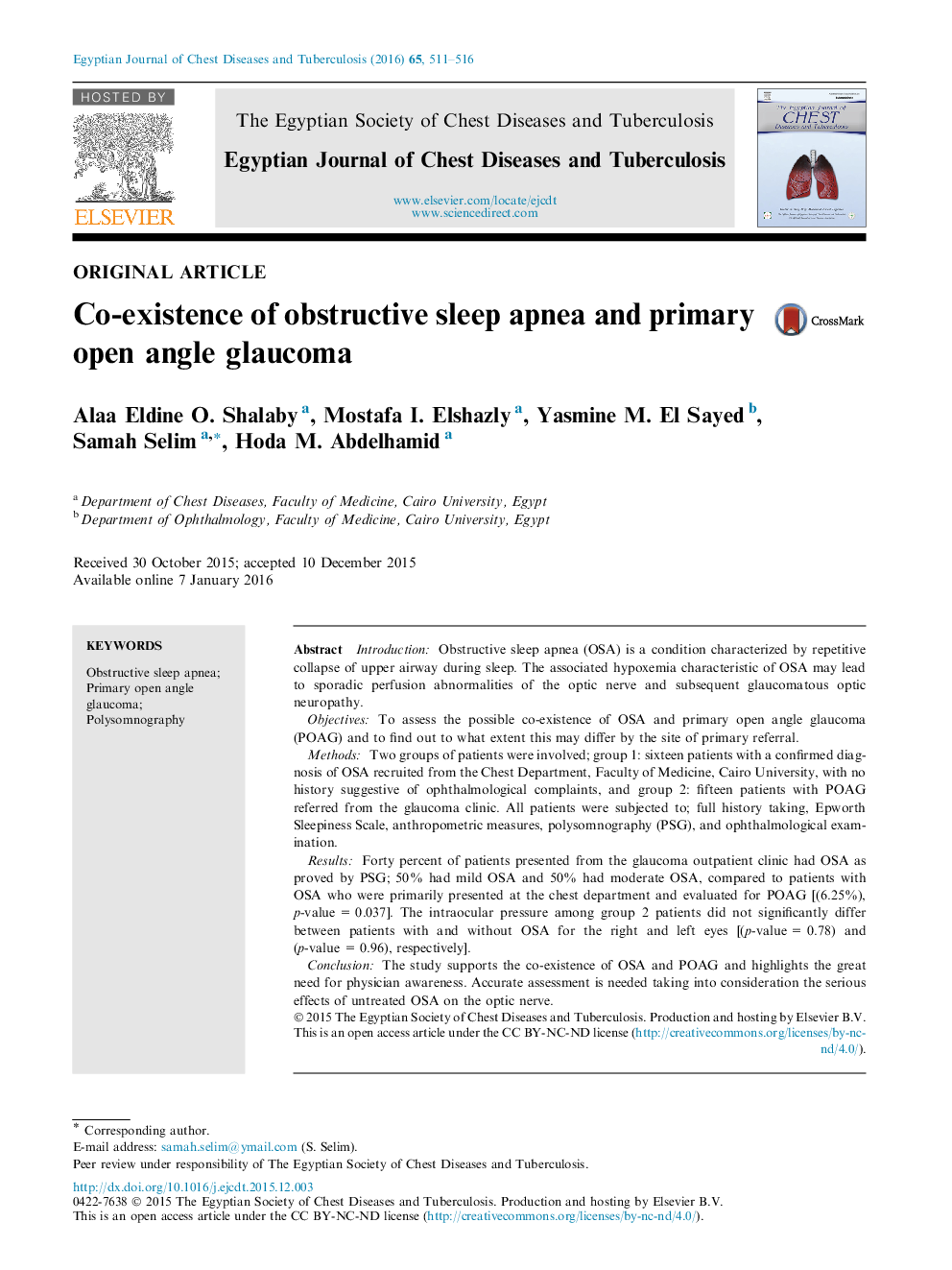| Article ID | Journal | Published Year | Pages | File Type |
|---|---|---|---|---|
| 3399865 | Egyptian Journal of Chest Diseases and Tuberculosis | 2016 | 6 Pages |
IntroductionObstructive sleep apnea (OSA) is a condition characterized by repetitive collapse of upper airway during sleep. The associated hypoxemia characteristic of OSA may lead to sporadic perfusion abnormalities of the optic nerve and subsequent glaucomatous optic neuropathy.ObjectivesTo assess the possible co-existence of OSA and primary open angle glaucoma (POAG) and to find out to what extent this may differ by the site of primary referral.MethodsTwo groups of patients were involved; group 1: sixteen patients with a confirmed diagnosis of OSA recruited from the Chest Department, Faculty of Medicine, Cairo University, with no history suggestive of ophthalmological complaints, and group 2: fifteen patients with POAG referred from the glaucoma clinic. All patients were subjected to; full history taking, Epworth Sleepiness Scale, anthropometric measures, polysomnography (PSG), and ophthalmological examination.ResultsForty percent of patients presented from the glaucoma outpatient clinic had OSA as proved by PSG; 50% had mild OSA and 50% had moderate OSA, compared to patients with OSA who were primarily presented at the chest department and evaluated for POAG [(6.25%), p-value = 0.037]. The intraocular pressure among group 2 patients did not significantly differ between patients with and without OSA for the right and left eyes [(p-value = 0.78) and (p-value = 0.96), respectively].ConclusionThe study supports the co-existence of OSA and POAG and highlights the great need for physician awareness. Accurate assessment is needed taking into consideration the serious effects of untreated OSA on the optic nerve.
